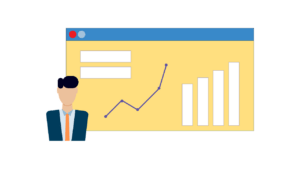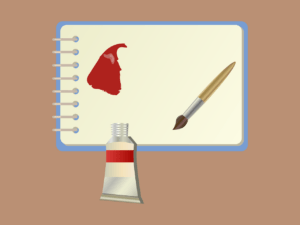A 8 Steps Guide for Understanding Web Development Life Cycle
There are dozens of different methods and processes that can be used to develop websites. The standard process that most experienced web developers use follows a specific pattern. It is known as the Web Development Life Cycle, or WDLC.
The WDLC consists of eight steps that every website development project must go through. It is required to be completed successfully. Each step requires both human effort and technology tools to be successful. You need to understand how these pieces work together. Also know why it’s so important to follow the WDLC exactly as written. Let’s take a closer look at each of the five steps in detail below.
Step 1 – Define Scope
The first step is to define the scope of the project. Before we can even think about writing a single line of code, we need to know exactly what it is that we want to build. A professional web developer will interview the client and understand his requirements. This helps the web developer create an accurate estimate of project cost and timeline. Before taking on any project, first step is to gain a full understanding of your requirements, Know about the goals and business objectives and all. So that you can ensure that what to deliver according to needs.
Step 2 – Estimate Budget
An important part of the business planning process is determining how much money you will need to get your idea off the ground. You should spend some time researching industry costs. So that you have a firm grasp of what a website development project will cost. Get estimates from developers and save those estimates. So that you can use them as reference when determining the final budget for your project.
You may find the estimates vary depending on which developer provides them. This variation, however, does not reflect the quality of service provided by any of the companies. It only reflects their overhead costs and profit margins. These are necessary for running a business but also differ between businesses.
Step 3 – Develop Functional Specification
After brainstorming and creating the project concept, the next step is to define the specifications of your project. This includes detailing what you want created. Most organizations use a functional specification template. It defines each item in a checklist format for easy recording and review.
Items usually include audience type, purpose of the project, and other details. These are related about how it will be used, cost and resource estimates. It will also specify any additional files or information you may need from the development team. The estimation also tells how long it should take to complete the project and others.
In addition to detailing everything you require done with your project by your developers/web design companies , you also include an acceptance criteria within your Functional Specification document. So ,they can walk through each element of the web design as they create it.
Step 4 – Design/ Prototype
Software design and prototyping is a process that involves creating a rough draft of your software. This process starts from brainstorming to creating a flowchart. After completing these two tasks, you will be able to create an idea of how your final product should look. You also know what parts it should have in order to do its job properly.
From there, you will be able to build a prototype of your product using any programming language such as C++ or Java. To test out if everything works as it should, you can create an application and offer it for free on sites such as Google Play or Apple App Store so that people can download and test out what you have created.
Step 5 – Coding/Development
After the design process is finished, the development process begins. This involves having a developer code the apps and oversee the creation of your application. Different developers have different programming styles, but they’re all typically driven by human-computer interaction (HCI) principals.
While this process doesn’t need to be as detail-oriented as the design process, you should still be involved as much as possible so that you understand what your app will look like when it’s completed. If nothing else, at least ask for an example or mockup of how your app might look when it’s done so that you can provide feedback based on your own vision for it.
Step 6 – Testing / Debugging
In this process testing of web apps is done, bugs are found and removed. The software undergoes exhaustive testing to check that all features work as intended and that no errors have been introduced during development. Manual testing methods can be laborious, expensive and time-consuming – so here at AppsDevPro we use automated testing to make sure our site is bug-free, efficient and error-free.
We first write test cases that represent real scenarios for users who will interact with your website or app in a browser. Then, using automation software such as Selenium we run through all of these test cases on every iteration of our site as it’s being developed – hundreds or even thousands of times each day – saving us (and you) countless hours!
Step 7 – Deployment / Implementation
After development is complete, the software or web app needs to be deployed to the client server. Many people confuse web app deployment with website hosting. The two things are not the same, even though they are often grouped together and done by the same person or company.
Step 8 – Maintenance / Support
While you’re debugging your app, are you also thinking about maintenance and support? How will you respond to bug reports, and what will it take to make changes? Will those changes break something else that needs to be repaired as well? A healthy web development life cycle includes maintenance and support strategies up front. Addressing these issues sooner rather than later can save time and money down the road. This requires a clear understanding of all dependencies—and dependencies upon dependencies—so that when an update is ready for deployment, all affected applications are patched properly.
Final Thought
The web development life cycle is a detailed process that can take from several weeks to several months depending on how long it takes for you to get feedback from your customers. If done correctly, you’ll have a great website that gets excellent reviews and helps bring you more business over time. You don’t want to rush through all of these steps because if your site looks unprofessional or breaks frequently, then nobody will trust it and you won’t get much traffic coming through anyway. When developing a new website, follow each of these steps carefully and always plan ahead to make sure that everything fits into place.







